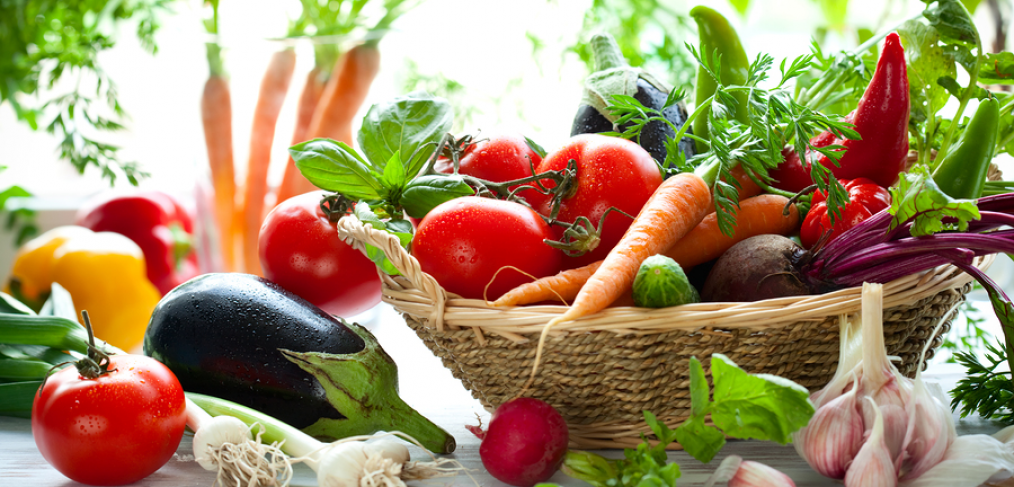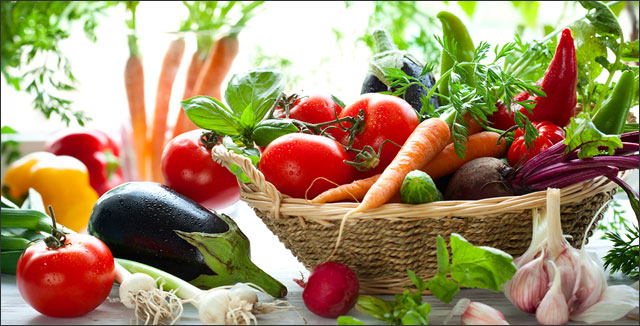
Eating Organic For Cheap – 7 Ways to Eat Organic on a Budget

This summer marked a huge change for organic food lovers. Amazon bought Whole Foods and immediately marked down prices.
I have a friend who jokingly refers to this store as the “whole paycheck.” You can pretty much find anything there – as long as you’re looking for an artisan organic gluten-free pizza with tofu cheese. But be prepared to pay.
Customers are noticing this trend, apparently, or maybe millennials are less interested in making their own food. In any case, Whole Foods reported three-quarters of sales declines last year. Fewer people are shopping there and buying less food when they do.
Whole Foods has responded by opening a new chain of stores called 365. They offer fewer options and frills in a smaller space. In addition, they mimic stores like Trader Joe’s, which has similar items for cheaper prices but retaining some of the frills you would expect to enjoy at a Whole Foods supermarket.
The Other End of the Spectrum
All the way down at the other end of the spectrum – or so you might have thought – is Aldi. The local Aldi just went through a five-week renovation that put its nearest sister store into a frenzy.
The cashier told me it was like “Christmas every day” around there while it was going on. You would never know this store when it was finished. It has:
- Wide aisles
- Lavish amounts of produce.
- Gluten-free snacks and cereal.
- Organic free-range brown eggs.
And the same low prices as before. I feel like I’m in heaven.
So, what gives?
Aldi has been in the news before for eliminating all bee-killing foods from their shelves. That is, any foods that have been raised with pesticides known to kill bees.
For any gardener and lover of all things natural, this is good news. One can feel good about shopping at bargain prices knowing it’s not at the expense of the planet.
This chain, a private German company which opened in the U.S. in 1976, has renovated many of its stores to offer this look – very similar to the 365 stores opened by Whole Foods.
Aldi has been quietly increasing its revenue for many years now by employing fewer people (you have to rent a grocery cart with a quarter, and bag your own groceries with bags you either bring or buy) and displaying mostly house-brand items in their shipping containers.
The stores are smaller too – typically only about 12,000 square feet. This is enough room for about 5 aisles. Produce selection has been limited.
The Organic Foods Explosion
You may have noticed many more organic options at Aldi over the years. However, this seems like an explosion. Truth be told, even Walmart and other grocery chains are offering organic foods now.
What was once the highest of premium foods is now ubiquitous. Regular grocery store chains will likely have to get on board or lose out.
Perhaps millennials don’t want to make their own food, but many of us have to. In addition, many of us have read too many accounts of what’s in traditionally farmed foods to want to eat them regularly.
What’s the average Joe to do?
If you can’t spend 60% of your income on organic food and Aldi – as great as it is – doesn’t have everything you’re looking for, how do you get those extra frills without making that special trip to Whole Foods every week?
7 Ways of Eating Organic on a Budget
If eating organic is a top priority for you and your family, here are 7 ways to accomplish this.
#1: Reduce Food Waste
This is one step you can work on without changing your buying habits at all. It starts with planning everything on your menu for the week. For some people, this is a no-brainer and for some, it seems like an insurmountable challenge.
However, the truth is that if you don’t plan, you will fall into the same category as the average household, who wastes 20-30% of what they buy and make.
It could be as simple as freezing your leftovers so you don’t let them mold in the back of the refrigerator. Or freezing the fresh greens you bought too much of to put them in a smoothie later.
Additionally, only buying what you know you will use, and then using it in a timely fashion. This is as opposed to eyeballing it and over-buying can save you money right up front.
#2: Eat Less Meat
Another obvious tactic is saving on the more expensive meat and cheese by not eating as much of it. Even whole grains and beans are much, much cheaper than expensive organic, free-range meats.
One vegetarian meal out of the week can save you $20-30 per week depending on your family size.
#3: Eat Seasonal Veggies Only
Save the environment and support local farmers by eating seasonal vegetables. When you’re eating strawberries in November, they have to be shipped from places in the world where it’s spring.
That means far away and lots of fossil fuels. The great thing about seasonal veggies is that they can stretch you to be creative in your cooking and gardening.
#4: Grow Your Own
We wouldn’t leave out the rather obvious option of growing your own food, right? Maybe not everyone can have a flock of chickens or a cow to milk, but just about almost everyone can grow something – in a pot, on a windowsill, in a driveway, in the front flower bed.
Be creative! Just saving money on fresh herbs is well worth it for the flavor and freshness and can be rewarding. They are crazy expensive from the supermarket and go bad quickly. Grow herbs indoors!
Grow tomatoes indoors in pots all year round! Try a Meyer lemon tree on your back porch. Bean sprouts in jars on windowsills make great salad and soup additions.
With a bit of determination, you can think of many ways to supplement, or even replace, the fresh foods you always buy, and for a fraction of the cost.
#5: Clean Fifteen
Know which commercially produced veggies and fruits are more or less impervious to pesticides.
For instance, avocados: their skins are so thick it doesn’t really matter if you buy organic. So load up on this great source of fat at the regular price instead of buying organic. However, stick to organic spinach. For more, please see 2017 Dirty Dozen and Clean 15 – What Parents Need to Know.
#5: Join Co-ops and Buy in Bulk
There are some great companies out there – national and local – offering wholesale prices for bulk buying. Likewise, there are many wonderful coops formed to take advantage of this.
With more people comes more buying power. You can find a huge variety of organic goods from quality sources for a fraction of what you would pay at Whole Foods.
#7: Buy a Whole Animal
If you have room for a chest or deep freezer, this could be a great investment for you. High quality meat that is free range and ethically treated can be very expensive.
Many smaller, local farms make good money from raising and selling a limited number of whole animals that are pastured, grass fed, and well-treated.
If you do a bit of snooping online, you can find ways to get in on a whole, half or quarter of a cow or lamb. Generally, it arrives in all kinds of cuts which you can deep freeze and use throughout the year. You may pay a chunk up front but it will even out as you will be paying several dollars cheaper per pound for local, fresh and ethical meat.
Takeaway
With more and more options out there, eating organic food is becoming easier and more accessible for everyone. But if you want the most rewards, grow it yourself!
Over to You
What ways do you find most helpful for eating organic on a budget?

